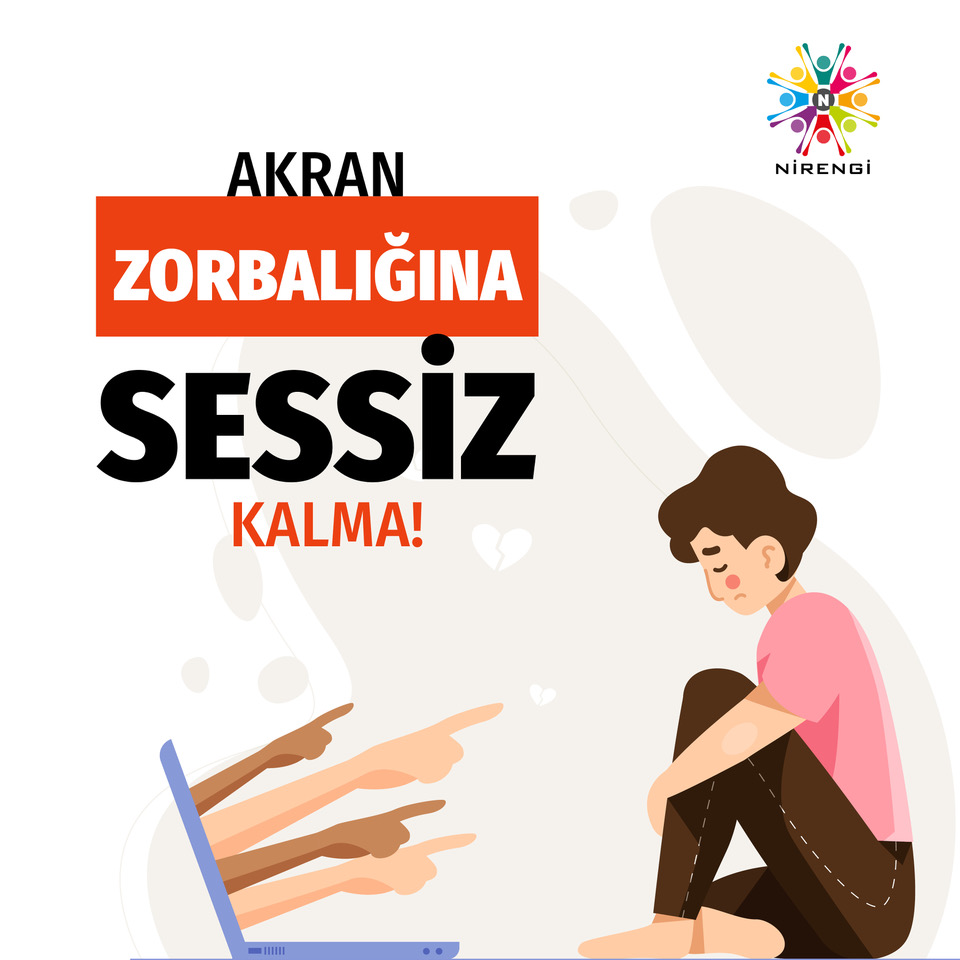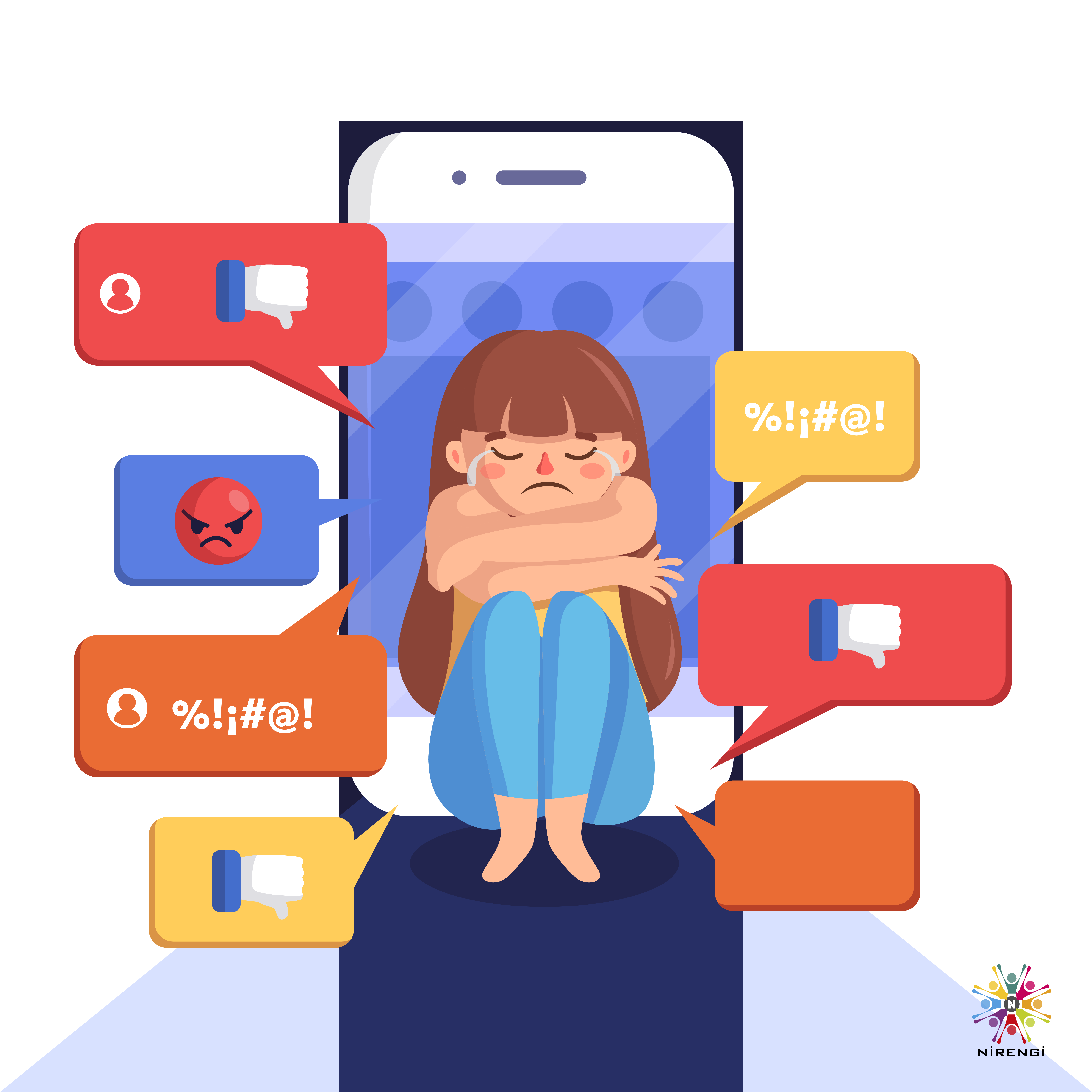PEER BULLYING
It is the repeated exposure of a student to aggressive, unsettling, damaging behavior by another student or group of students, physically, verbally, socially, or online.
There is a power disparity between a child who behaves bullyingly and is bullied. The child who usually behaves in a bullying manner; older, physically stronger, or socially more populous. Peer bullying, contrary to popular belief, is not seen only in the form of physical bullying. Physical bullying is just one of the types of peer bullying. Verbal and social bullying is also a common form of bullying. At this point, it is important to know the difference between peer conflict and peer bullying, two concepts that are confused with each other:
Peer Conflict
Peer conflict is situational and it is common for it to occur between peers. There is a friendship relationship between the parties, regret over the conflict, and an effort to solve the problem. It helps children/young people develop problem-solving skills. Unlike being bullied between two conflicting peers, there is a balance of power, an effort to solve problems, a sense of responsibility, and remorse. Neither side seeks a specific gain and reacts equally emotionally to the conflict.
Peer Bullying
Peer bullying is not limited to one time of bullying. To call a situation that occurs among peers bullying, the fact that the behavior is carried out systematically and repeatedly is among the distinguishing features.
The reason why the student who behaves bullying uses violence as a problem-solving method and thinks that the other party deserves harmful behavior are the reasons for prams bullying behavior. Among the main reasons are that the student who behaves bullying at the basis of these behaviors has difficulty empathizing, is insensitive to the feelings and thoughts of others, and does not feel responsible for his actions. The child who behaves in bullying behavior does not regret his actions and does not take responsibility for his actions.
Bullying behavior has negative physical, emotional, and social effects on the child who is subjected to these behaviors. Being bullied can cause the child/young person not to want to go to school, their academic success to decrease, and their negative thoughts about themselves. He may feel helpless and inadequate. Among the extreme effects of peer bullying, susceptibility to substance use and suicidal thoughts can be seen. For this reason, it is very important not to ignore and intervene in bullying behavior.
Types of Peer Bullying
Physical Bullying
It is a type of bullying that involves harmful physical behavior. Examples of physical bullying include hitting, slapping, beating, kicking, pushing- pulling, scratching, pulling your hair, tripping, spitting, forcibly confiscating items, stealing money or items, forcibly ordering things, defaming books or books, using your belongings without permission.
Verbal Bullying
It is a type of bullying that contains verbal expressions. Swearing, mocking, mocking, nicknamed, mocking their bodily characteristics (height, weight, hair, etc.), mocking their appearance (clothing, glasses), mocking, insulting, insulting, insulting, threatening their speaking style, accent, or mouth (accent) are examples of verbal bullying.
Social Bullying
It is a type of bullying that involves social behavior. Exclusion, disregard, disregard, preventing other students from talking to him and making friends with him (by provoking them to break up), gossiping and spreading rumors, complaining unfairly (to the teacher, principal), damaging his honor are examples of social bullying.
Cyberbullying
An aggressive, deliberate, and repeated use of electronically based communication tools against a person or group. Examples of cyberbullying include spreading rumors and rumors about the person on the Internet, taking and disseminating private and private photos of the person without permission via mobile phone, sending threatening, embarrassing, and offensive messages, engaging in damaging online activities to others using personal information as if they were that person, blackmailing the person with videos or photos.
What should be considered in case of cyberbullying?
With the Covid-19 process, the use of digital media has become a necessity, increasing the importance of awareness of the dangers that may be encountered. For this reason, students who are cyberbullied and their parents/caregivers must know what to do in case of peer bullying and feel that there are adults around the child/young person who can get support on the subject.
In case of bullying through social media platforms, it can be intervened in the form of blocking the person who exhibits bullying behavior, reporting it to the relevant sharing site with screenshots, informing the school administration with screenshots, and starting a legal process, and filing a criminal complaint. In addition, it is important for parents/caregivers to be accessible to the child, to inform their children about cyberbullying, to know and feel that the child can get support from them in a protective and preventive sense. Within this framework;
- Not sharing social media account passwords with anyone,
- Obstruction of the person who is bullying,
- Not responding to bullying,
- Tell the situation to the parent or an adult he trusts,
- Recording and storing everything that happens as evidence,
- Social media sites are complained about by operating community rules,
- Refusal to accept cruel content,
- It is important to inform the child not to share anything he is uncomfortable with.
CORRECTLY KNOWN WRONGS
Mistake
Bullying is a natural process of youth, empowers children.
True
Bullying is not a natural process, it has nothing to do with character empowerment. The child who is bullied is socially and emotionally damaged. It can cause the child to feel lonely, to have a shaken self-confidence, and to experience depression. Exposure to peer bullying can have consequences up to suicide.
Mistake
If bullying is left to its own devices, it will end in time.
True
Ignoring bullying encourages the person who engages in bullying; bullying can cause it to increase its dose.
Mistake
Only boys bully.
True
Both girls and boys are bullied. Research shows that boys are more physically bullied, while girls are predominantly emotional and socially bullied.
Mistake
True
Although physical bullying often comes to mind in adulthood when it comes to bullying, verbal (name-calling) and social (exclusion, gossiping, etc.) bullying are the most common types of peer bullying. All types of bullying adversely affect the development of the child.












